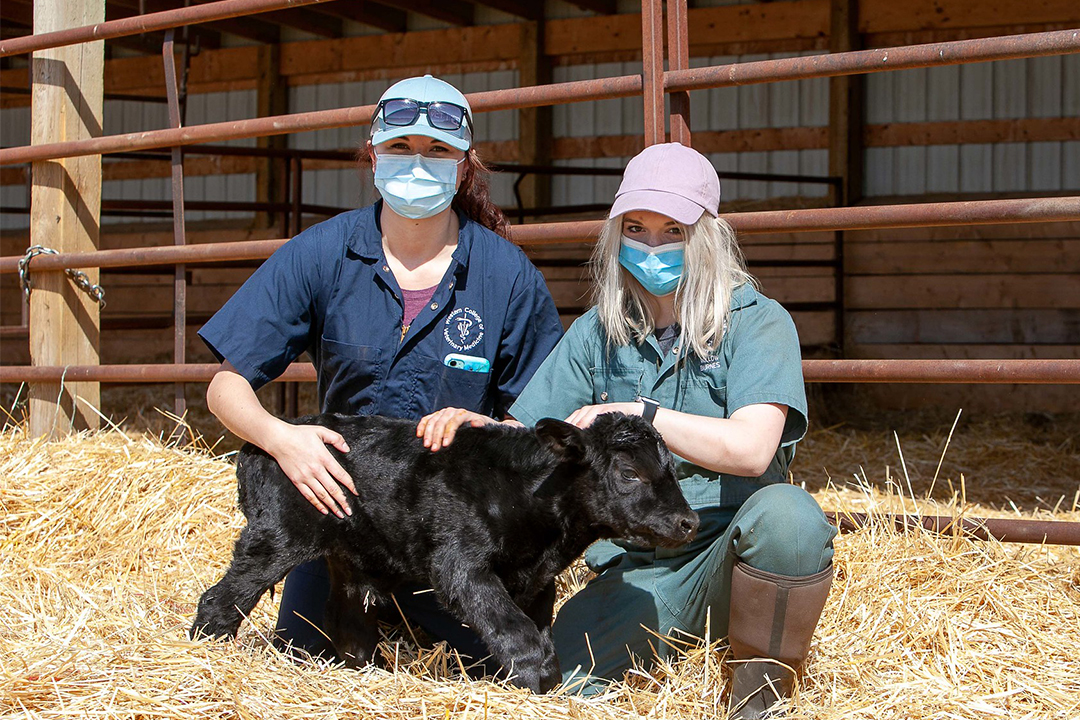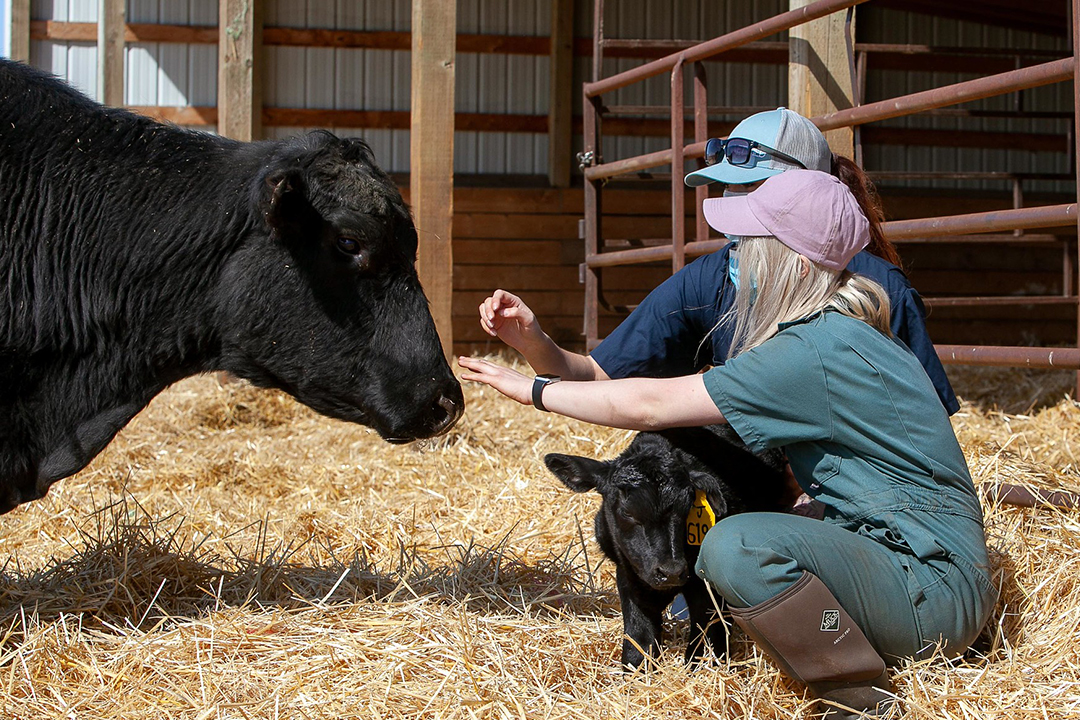



Premature calf provides a learning opportunity to Canadian vet students
During the first ever calving rotation held at the Livestock and Forage Centre of Excellence (LFCE) this spring, senior veterinary students were met with a challenging calving.
The fourth-year University of Saskatchewan Doctor of Veterinary Medicine (DVM) students were on the final day of their rotation when a male calf was born on April 12, 2021, about three weeks earlier than expected. In April and May, 400 cows and heifers calved at the LFCE’s Forage Cow-Calf Research and Teaching Unit, located south of Clavet, Sask.
Typically, a premature calving would be concerning for beef cattle producers, explains Dr. Colin Palmer, associate director of the LFCE and co-ordinator of the Western College of Veterinary Medicine (WCVM) calving rotations. However, for the six students on the clinical rotation, it provided a learning opportunity in the last weeks of their veterinary program.
“It really gives the students a chance to develop their skills,” says Palmer. “Examining the calf, determining its needs and developing a treatment plan — it’s all good stuff [for them to experience].”
The students and animal technicians at the LFCE noted that the newborn weighed 43 pounds, which is about half that of the other calves in the herd. The calf’s front incisors hadn’t erupted yet, and he had a very short hair coat and very soft toes. He was able to nurse from his mother on his own from the first day of birth but required supervision.
For the students, knowing what to do in situations where a calf is chilled from the cold, mismothered or when twins are born is critical once they’re working in the veterinary field.
Palmer says that the premature calving at the LFCE gave the veterinary students valuable first-hand experience in following through on treatment plans. These plans included frequent feedings, encouraging the calf to suckle on its own, and then monitoring its intake of colostrum.

Colostrum is the mother’s first milk — it’s thicker than the usual milk and is only produced during the first day or two after calving. The newborn calf must consume an adequate quantity of colostrum preferably within the first six hours of birth to ensure a successful transfer of immunoglobulins (antibodies).
Calves absorb immunoglobulins from the colostrum directly into their blood stream. But after six hours, gut closure begins to occur, meaning the calves begin to lose that ability, and gut closure is completed 24 hours after birth.
“Without colostrum, the risk of the calf succumbing to infection during the first several weeks following birth is much higher than a calf that receives adequate quantities of colostrum,” says Palmer.
Fortunately, there are dried colostrum products available, and producers can reconstitute the dried product in warm water.
During their calving rotations at the LFCE, the fourth-year veterinary students learned more about the importance of colostral immunity from Dr. Philip Griebel, a professor at the USask School of Public Health and an associate member of the WCVM Department of Veterinary Microbiology. They helped Griebel by recording data and harvesting samples.
“Students on the first calving rotation spent many hours monitoring calving — recording the time to mothering and first intake of colostrum,” says Palmer. “Blood samples were harvested before colostrum ingestion and two days after birth to assess the level of intake. This was a valuable learning opportunity and will be included in future rotations.”
Because colostrum is so vital to calf survival, it is important for producers to look at the immunoglobulin content of the product they use, says Palmer. Some newer products also contain additional energy sources, which is especially helpful in situations where calves are weakened due to cold weather or a difficult birth.
“Newborn calves do not have a lot of energy reserves, so it’s quickly used up trying to stay warm,” says Palmer. “Premature and otherwise undersized calves have even less reserves, making their situation all that much more critical. Weak, hypoglycemic calves often cannot stand and remain sternal or lie flat on their sides.”
Calves born a month or more preterm are not viable without intensive care and will not survive past one or even two days. Yet this small calf survived the critical period in the first hours of life, thanks to the supervision of the veterinary students and LFCE staff. Palmer says that by the end of May, the young six-week-old calf was out in pasture with his mother. And although he’s small for his age, the calf is still viable — and growing.


